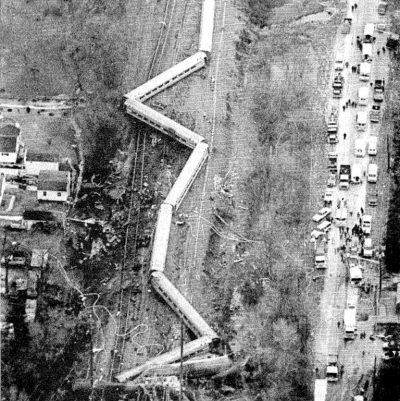
chaos on the rails
It was a frigid cold January 4th afternoon in 1987 when Amtrak passenger train (Train 94) left Washington DC heading to Boston. Reaching speeds of over 125 mph the train entered the Chase community in eastern Baltimore County, Maryland at approximately 1:30pm. At the same time, a Conrail locomotive crew failed to stop at the signals placing itself in the direct path of the oncoming Amtrak train. Sixteen people lost their lives in the accident and many, many injuries were reported among the approximately 600 passengers aboard. It took rescuers over 10 hours in frigid temperatures to extricate passengers from the wreckage. The front cars of the passenger train that sustained most of the impact and damage were not yet occupied. The investigation by the National Transportation Safety Board (NTSB) revealed that had those cars been filled, the death toll would have been significantly higher.
the investigation
The NTSB investigated the accident and determined that had the Conrail locomotives failed to slow down at the signals as required, they would have been able to stop in time to avoid the collision. Ricky Gates, the engineer for Conrail and his brakeman, Edward Cromwell both tested positive for marijuana following the accident, even though they denied using the substance. Prosecutors later cut a deal with Cromwell offering immunity for testifying against Gates stating that both Cromwell and Gates had been smoking marijuana while on duty. After four years in prison for manslaughter, Gates admitted in an interview in 1993 that the accident never would have happened if he was not under the influence of marijuana st the time. He also admitted that he had smoked marijuana several times while on duty.


the result
The Federal Railroad Administration was forced by legislation to strengthen its certification processes for locomotive engineers which went into effect January 1990. These processes require that in addition to engineers being properly trained and certified, they can have no drug or alcohol impairment convictions for the five years prior to certification. In 1991, Congress required not only the FRA, but all agencies regulated by the Department of Transportation to implement mandatory random drug testing for all safety sensitive duty employees regulated by the agency.
Each year, the agencies review the results of the random testing completed and determine the levels at which regulated companies must randomly test their employees. Levels of random drug testing range from 25% to 50% depending on the agency and the number of positive results from a specific agency. The higher the number of positive test results, the more random testing is ordered.
Companies in these regulated industries are required to follow the regulations found in 49 CFR Part 40 as well as their agency specific regulations. To learn more about these regulation and the specifics for each agency, please visit www.carolinatesting.com For help in getting into compliance with the regulations and maintaining compliance with DOT drug and alcohol testing requirements, please contact the DOT specialists at Carolina Testing today.
